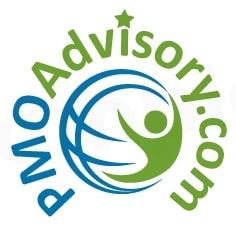PMO Maturity Evaluation

Having a baseline of your project management maturity allows you to benchmark yourself against others in your company or industry. The baseline also allows you to compare over time how you are performing and if you are maintaining your focus or beginning to take shortcuts in your project management processes. The key objective in achieving project management maturity is to improve your performance in the areas of schedule, scope, budget, and quality of the organization’s projects. The models used for measurement are effective in uncovering weak points and provide guidance as to what needs to be done to strengthen them. They also speak to the culture of your organization and the support necessary by your senior management team. This is the greatest value of a project management maturity model, providing guidance for success. Because Organizations change along with standards and best practices constantly evolving, having a model to re-evaluate the status of your current project management processes creates guidance on how and where to improve.
Hence the first step is to measure your Project Management Maturity level to identify and prioritize all deficiencies and gaps. The next step is to develop a plan of attack to close those gaps and assign the necessary resources to that plan. The final step is to execute the plan and then assess yourself again to see if you have made progress.
Like anything else that grows, PMOs go through stages of maturity as they become more efficient and make the transition from reactive to proactive. This maturing process results in more projects complying with standards, meeting and exceeding requirements, and concluding successfully. Knowing where you are in the PMO maturity model enables your organization to identify areas of improvement, while also establishing goals for where you want your PMO to be in the future. Your project management maturity model is your compass guiding the organization to higher levels of effectiveness with the different processes utilized on projects. The many project management maturity models that can be adopted are similar, and generally have five stages of progression that guide organizations on their path to improved performance. The initial stages are about introducing project management methods, followed by increasing levels of adoption and standardization, leading to a fully-optimized organization.
Level 1 – The Initial Process
At this level, processes are just becoming defined. There isn’t a high level of sophistication in the PMO and many processes are used for very specific purposes, instead of being rolled out across multiple tasks to leverage efficiency. Also there is minimal integration with the rest of the organization. Management is aware of the PMO but isn’t necessarily on board with its use at this point.
Level 2 – Structured Process and Standards
The PMO is growing up a bit. Established are basic processes, but they’re only being used on the biggest or most high-profile projects in the organization. Management is now more on board and is encouraging the use of the PMO. The PMO is applying its knowledge and tools to create project plans, estimates, and schedules. Reporting is high-level, inconsistent, and fairly basic.
Level 3 – Organizational Standards and Institutionalized Processes
By now, processes are standardized across the organization and are repeatable. Reporting is much more detailed, and project plans, estimates, and scheduling are based on industry standards, as well as best practices, lessons learned, and historical data. Work is underway to analyze project performance as the PMO is focused on the organization.
Level 4 – Managed Processes
The PMO’s processes are now integrated with corporate processes, like reporting and data analysis, and management is mandating compliance with the PMO, which is now able to provide in-depth analysis of project performance. Also, historical organizational data and performance is now driving project plans, estimates, and schedules.
Level 5 – Optimizing the Process
Project efficacy and efficiency can be measured as the PMO now has full processes in place. Along with these these processes, there are more processes to ensure project performance continues to improve, instead of remaining constant. Lastly, management is focused on continuous improvement of the PMO and it’s projects.
Now that you’re aware of the five levels of PMO maturity, you can begin to assess your PMO to see where it falls within the stages and determine the necessary steps to take it to the desired level.
Our Approach to PMO Maturity Assessment
- We help you prepare for your assessment
In a first stage we clarify goals and expectations. Then we identify key stakeholders and go through already available information.
- We organize your assessment (Maturity/Gap analysis)
Next, we have conversations with the key stakeholders to get an idea of the existing situation. We identify gaps between the actual and the desired maturity level.
- We discuss recommendations
Recommendations will be identified and discussed. We assess your potential for improvement, along with the ease of implementation.
- Together, we create your roadmap
Finally, a roadmap is created which includes alignment, prioritization and phasing of the initiatives. A change approach and set-up of communication and governance is included.
After completing this maturity assessment, you can count on these outcomes:
- Increased awareness on perceived value and effectiveness of your PMO
- A strategic plan to improve the maturity of your PMO
- Competitive advantage due to higher PMO maturity
